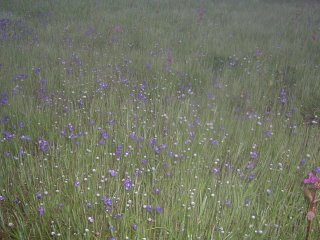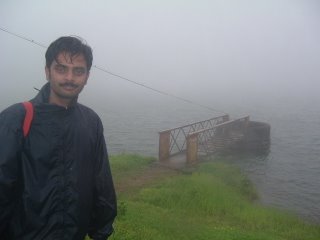Harishchandragad is a part of the Sahayadri range with the most amazing convex fall called the Konkan Kada. After days of searching for fellow partners, me and Udi went ahead with this trek.
We started early in the morning to catch a bus for Ale Phata because we were supposed to check out for a bus to Khireshwar, the base village for our trek.
The area was Ahmednagar district close to Junnar which is the den of leopards. We got down at Ale Phata only to know that we wouldn’t get a bus for Khireshwar, we had missed it by 40 minutes. For trekkers information,there is one bus which goes directly from Pune to Khireshwar which leaves from Otur bus stand by around 9.30 am. We managed to get a bus for Khubi Phata, which is located about 4 Kms from Khireshwar. We started the journey to Khubi Phata and were mesmerized by nature's beauty present enroute in the form of the Sahayadri range.
We were all set to deal with the leopards and even the chilling cold still looming over end of January. Though it was quite pleasant in Pune, we had expected it to be a little tougher in this region, especially at the top of our summit, which was approx 4500 ft high. We got down at Khubi Phata only to realize that we would have to walk 4Km to reach at the base village, Khireshwar, along the Malshej Ghat. This place becomes a buzzing with tourists and a heaven for an ornithologist during the months from June to September with Flamingoes who have travelled thousands of kms from Siberia flocking in hoardes during the rainy season.
The water seemed very calm and cool and we could not resist it for long. We decided to halt and soak in the beauty of the place. It was a sight for sore eyes to see the beauty of the dam near the hill.
We started our trek to the summit and it took us nearly three and a half hours from the base village to reach the top. The terrain is good but extremely demanding and physically taxing untill one croses the Tolar Khind.We rested at the Khind for some time. The forest along the way is pretty dense and though we started in the daytime we did not feel the heat due to the greenery and also since it was winter.
Please do not forget to take enough water, as it’s a long trek. There are water cisterns on top of the hill but its better to carry water from the start itself.
After Tolar Khind the terrains become a little slope and we had a thin rod catch hold of during the next part of the journey. The path is well carved yet I can imagine in rainy season climbing this steep terrain. We reached at the top of the hill and then a long walk of about 1 and a half hour to the temple. It’s a old temple more than hundred years old of Lord Shiva and according to the villagers description it gets real crowded during Shivaratri.
We took a little rest. There is a small stall where we had some taak truly refreshing at that moment. It was getting a little dark so we moved on to see Konkan Kada about 20 minutes from the temple. We reached there and the majestic view took off all the pain and strain as it is amazaing to sit near the edge of the Konkan Kada and watch the sun set. It’s an amazing piece of nature’s art and one can actually see the convexity which is beyond explanation. One has to be there to experience its beauty and even photographs fail to capture the majesty of the fall.
We came back to the temple after it was dark and took the view and experience of Konkan Kada captured in our minds forever. We reached back to the temple and hunted for some space to sleep. The guy at the stall offers dinner at the place as well and can help to find a place to sleep. The rates for food are pretty reasonable and other services are free of cost.
There are ancient caves where one can make fire and sleep but we decided to stay in the temple.
We had our dinner that we carried from Pune and arranged our sleeping bags preparing to sleep in one of the rooms at the temple. One can get water from the underground water cisterns at the temple. The water is good and cold which is truly refreshing at that time. We came out to have some fresh air and were amazed by the sky full of stars. One thing that even we didn’t knew earlier. It was amazing and we sat there for about an hour or so looking at the sky so different from a polluted city sky. It was like amazing.
In the morning we got up early and want to see the other two peaks Taramati and Rohidas as well as the Balle Killa. It was amazing to see almost a score of hills of Sahayadri surrounding the peak. The temple looked like dirt on the floor of a green carpet. The greenery was amazing pointing towards the rich Flora and Fauna surrounding the peak. We had a little Poha which was enough for our breakfast yet he charged only 8 Rs for that, quite reasonable.
We said bye to the peak and started our descent. We got down in one and a half hours as compared to the four and a half our during as. We also visited an old temple along the way to Khubi Phata near Malsez Ghat. This walk from Khireshwar to Khubi Phata was the most distressing part as walking four kms after all that was little too much yet we managed and after two or three tries to get a bus where the bus-drivers seemed to be in too much hurry to have look at us we finally managed a bus to Ole-Phata and returned.
It was a wonderful experience to be there at the peak but the major attraction of the trek for me would be the Konkan Kada and the clear sky. I think everyone interested in nature should atleast this place once.








